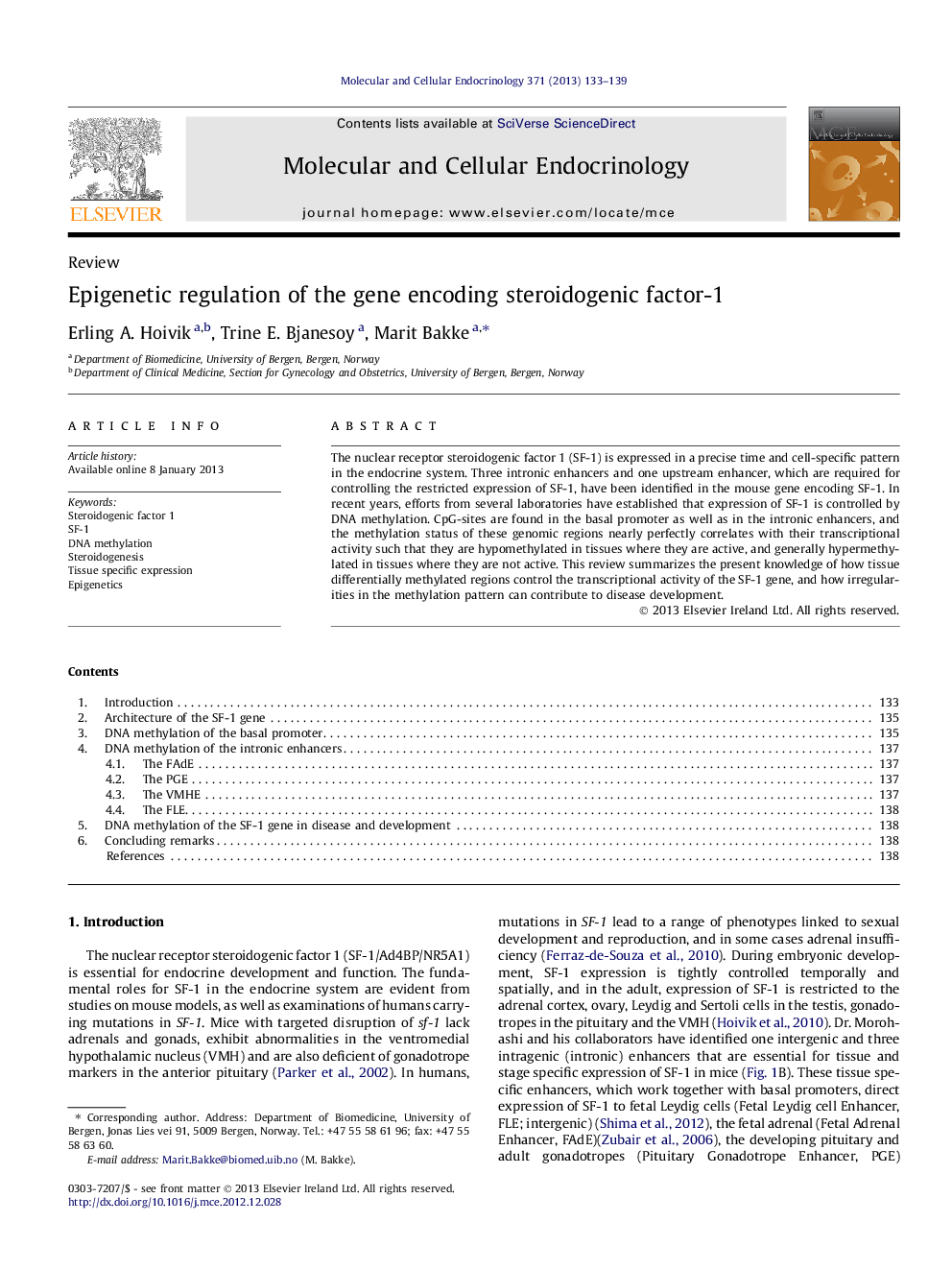| Article ID | Journal | Published Year | Pages | File Type |
|---|---|---|---|---|
| 8477520 | Molecular and Cellular Endocrinology | 2013 | 7 Pages |
Abstract
The nuclear receptor steroidogenic factor 1 (SF-1) is expressed in a precise time and cell-specific pattern in the endocrine system. Three intronic enhancers and one upstream enhancer, which are required for controlling the restricted expression of SF-1, have been identified in the mouse gene encoding SF-1. In recent years, efforts from several laboratories have established that expression of SF-1 is controlled by DNA methylation. CpG-sites are found in the basal promoter as well as in the intronic enhancers, and the methylation status of these genomic regions nearly perfectly correlates with their transcriptional activity such that they are hypomethylated in tissues where they are active, and generally hypermethylated in tissues where they are not active. This review summarizes the present knowledge of how tissue differentially methylated regions control the transcriptional activity of the SF-1 gene, and how irregularities in the methylation pattern can contribute to disease development.
Keywords
Related Topics
Life Sciences
Biochemistry, Genetics and Molecular Biology
Cell Biology
Authors
Erling A. Hoivik, Trine E. Bjanesoy, Marit Bakke,
